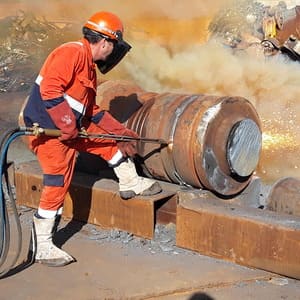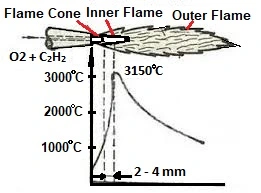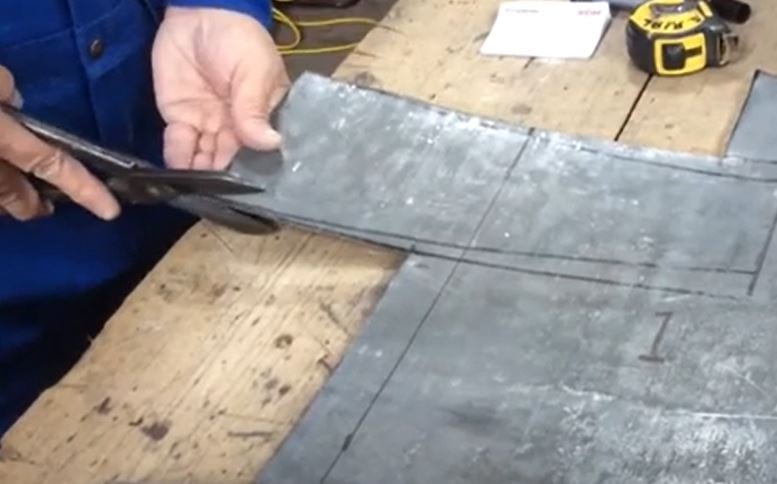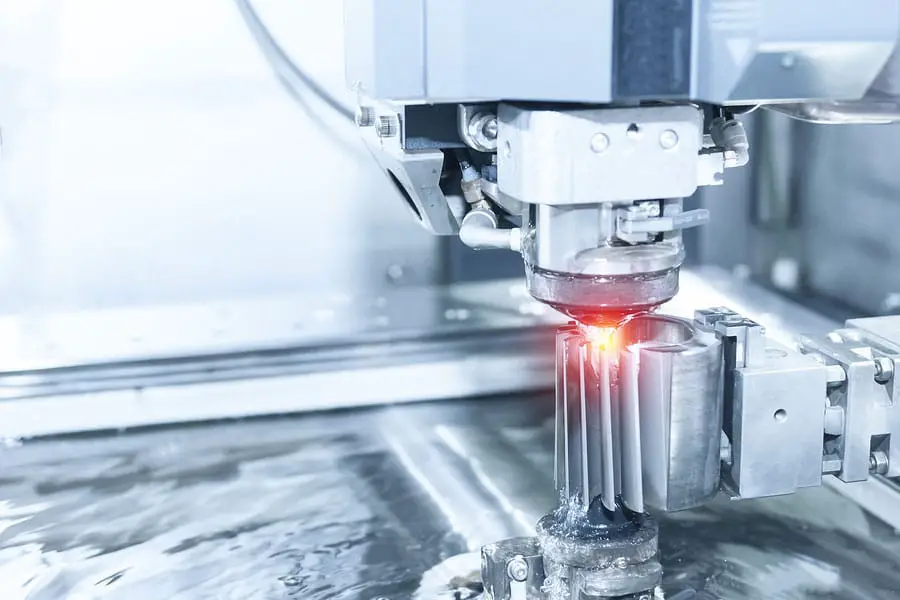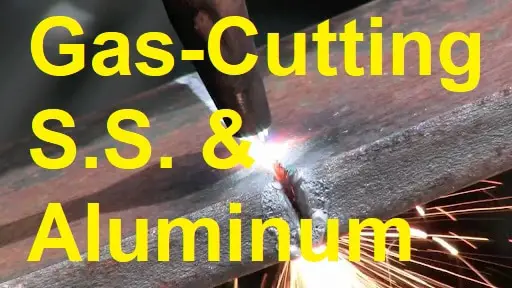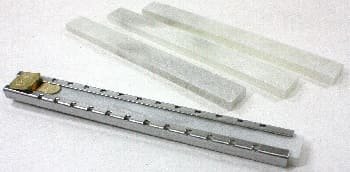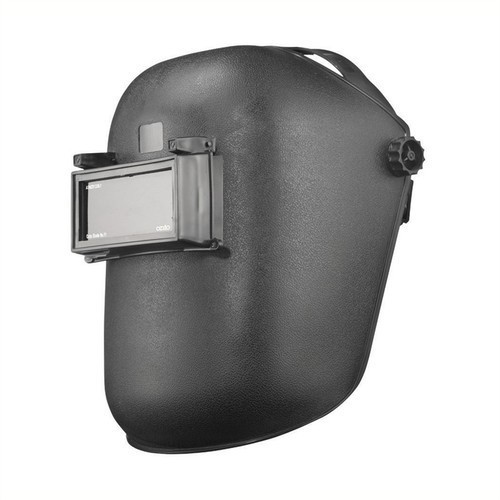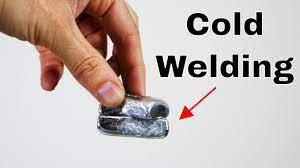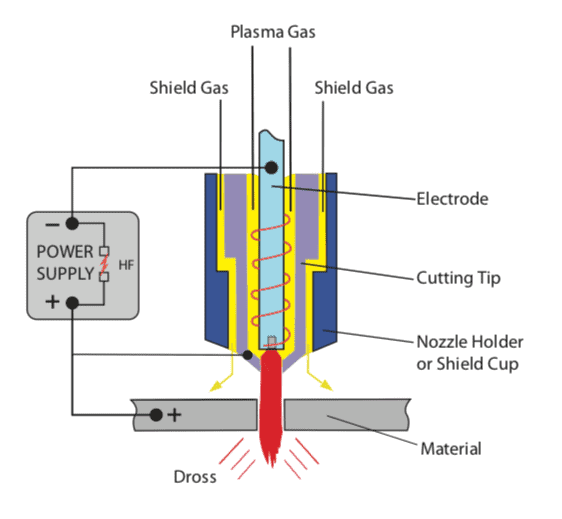What is Cold Cutting meaning?
Cold cutting is a process of cutting materials without the use of heat or sparks. This makes it safe to use in hazardous places where there may be flammable vapors present.
Cold cutting also eliminates the potential for HAZ, or heat affected zone, which can occur when using traditional methods such as flame cutting.
There are many benefits to cold cutting, including the fact that it is much safer than using traditional methods. It is also more efficient and can be used in a variety of different settings. Whether you need to cut through metal, plastic, glass, or even concrete, cold cutting is a great option.
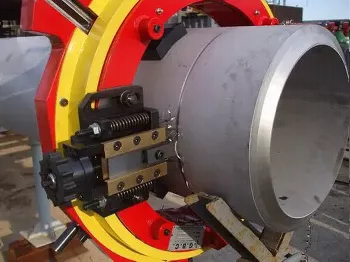
Cold cutting is a method of cutting that uses a cold process to avoid heating the material being cut. This means that no heat is generated during the cutting process, making it ideal for sensitive materials or those that are difficult to cut with traditional methods.
Advantages of Cold Cutting
When it comes to cutting, the process is quite simple. Cold cutting is a method of cutting that involves using a tool that does not create any heat or sparks.
There are many advantages of cold cutting over traditional hot cutting methods. Here are the main advantages of cold cutting:
- Cold cutting produces cleaner cuts than hot cutting methods.
- There is less distortion of the metal when using cold cutting methods.
- Cold cutting can be used on delicate or sensitive materials that cannot withstand the heat of traditional hot cutting methods.
- Cold cuts are generally smoother than hot cuts, making them easier to work with and less likely to cause damage to surrounding materials.
- Cold Cutting does not produce sparks or fumes, making it a safer option than hot cutting methods.
- Cold Cutting techniques produce no heat-affected zone (HAZ) damage, meaning that there is less potential for the material to be weakened or damaged during the cutting process.
- Cold Cutting is safe to use in hazardous places, as there is no risk of fire or explosion.
Disadvantages of Cold Cutting
There are several disadvantages of cold cutting. the mains are:
- Cold cutting is a more expensive process than hot cutting.
- Cold cutting is a slower process than hot cutting.
- Another disadvantage of cold cutting is that it can produce hazardous waste. When materials are cut without the use of heat, they often produce toxic waste that must be disposed of properly. This waste can contaminate soil and water, and it can also be a health hazard for people who come into contact with it.
Cold Cutting of Pipes
Pipe cutting (parting, bevel preparation or making holes) by pneumatic or hydraulically powered devices is occasionally used to perform highly hazardous work in potentially explosive environments (e.g. in live oil & gas plants).
Particularly, heated cutting in flammable atmospheres is prohibited in such areas. Cold cutting is highly beneficial in such situations for pipe cutting.
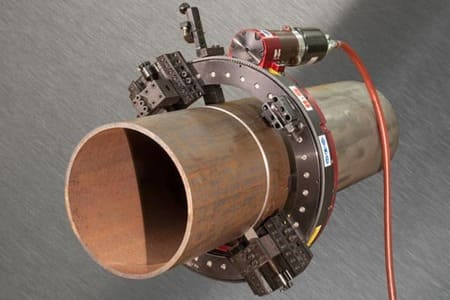
The Cold Cutting process uses a cutting tool or other device to cut through metal without heating it. This method is also often used for cutting stainless steel and other metals that are difficult to heat evenly.
Pipe Cold Cutting machines enables the user to cut pipes, prepare bevel, reface flange surfaces, and machine the I.D. (inside diameter) of a tube/ pipe with counterboring or stepping. Pipe Cold Cutting is widely used in cross country pipelines to prepare weld bevel on field welds as well as in offshore projects.
Pipe Cold Cutting machines can be used to make straight cut on pipes, make bevels of different types (e.g. compound bevel, V-Bevel, J-bevels, compound J bevels & any other special weld preparation.
Cold cutting is also used for safety reasons, as it eliminates the risk of fire and explosion that can occur when metal is heated as explained earlier.
Cold Cutting Machines & Their Types
There are different types of cold cutting machines available in the market, each having its own unique set of capabilities. These machines are either Pneumatic or Air-Driven or hydraulic powered.
A cold cutting machine is a power tool that uses a rotating blade to cut through materials mainly used for pipe cutting and beveling.
Many machine manufacturers has developed their own types of pipe cutting machines although the main types of cold cutting machines are:
- Clamshell lathes,
- Split frame cutters, and
- Clamshell cutters.
These machines rotate in a circular direction and can make straight or angle cuts. The smaller machines have fixed frame attached to the pipe & they are mainly used for making bevel or surface facing on heavy wall thickness pipe/ flanges.
if you need to cold cut pipe that’s too big to fit in the frame, you can use the split frame feature.
Cold Cutting Pipe Procedure
There are four main steps in a cold cutting pipe procedure: preparing the area, cutting the pipe, removing the cut piece, and cleaning up.
Preparing the area includes making sure that the area is clear of any debris or objects that could get in the way of the cutting process. The next step is to mark the area where the cut will be made. It is important to use a marker that will not damage the pipe.
Cutting the pipe can be done with a variety of tools, but it is important to use one that is designed for cutting pipes. After the cut has been made, it is important to remove any sharp edges from the cut piece so that it does not damage anything else.
The main steps for cold cutting pipe:
- Make sure that you have all of the proper safety gear. This includes gloves, eye protection, and emergency stop switch & clamping system.
- Mark the cut line on the pipe with a pencil or other suitable marking tool.
- Place the cutting tool on the marked line and align it so that it is perpendicular to the pipe. Set the feed rate & cutting speed on the machine.
- Apply pressure to the cutting tool and make sure that it cuts through the entire thickness of the pipe & the cutting path is correct.
- Once the cut is complete, remove the cut section of pipe from the main body of the pipe. Clean the pipe surface from cutting burrs or sharp edges.
Abrasive Water Jet Cutting
Abrasive Water Jet Cutting is a process that uses a high-pressure stream of water to cut through materials. The water is mixed with an abrasive material, such as sand, to help break through the material.
This type of cutting is often used for materials that are difficult to cut with traditional methods, such as titanium, aluminum, granite or composites materials. It can also be used to cut through multiple layers of material at once.
Abrasive Water Jet Cutting is a fast and accurate way to cut through materials, making it ideal for many applications. They can be used for ferrous, non-ferrous, plastic, glass, stone, wood or any other materials without affecting it metallurgically.
The process is often used to cut shapes or patterns into material, or to create holes for pipes or other objects. Abrasive water jet is also used for machining.
How does Waterjet Cutting work?
Waterjet cutting is a process that uses a stream of water to cut through materials. The water is pressurized to around 60,000 psi and then ejected through a small nozzle at extremely high speeds.
In Abrasive water jet cutting, the water is mixed with an abrasive material, such as sand or special abrasive material, to help break through the material.
The waterjet cutting process begins with a water jet pump that pressurizes the water to extremely high levels. The pressurized water is then passed through an nozzle where it is ejected at high speeds. The jet of water is directed at the material that needs to be cut. The waterjet will quickly cut through the material, leaving a smooth edge.
Waterjet cutting is a versatile and precise cutting method that can be used on a variety of materials.
Waterjet cutting is an industrial process that uses a high-pressure stream of water to cut through materials. The water is typically mixed with an abrasive material, such as sand, to help it cut through harder materials.
Advantages of Waterjet Cutting
Waterjet cutting has a number of advantages over other methods of cutting materials. It is non-contact, so there is no heat or mechanical stress applied to the material being cut. This makes it ideal for cutting sensitive materials, such as electronics or food.
Waterjet cutting is also very precise and can be used to create intricate designs. The stream of water can be directed very precisely, making it possible to cut very small and detailed shapes.
Cold Cutting Stainless Steel
There are many ways to cut stainless steel. Some of the most common methods are cold cutting, hot cutting (Plasma, laser) sawing, and shearing.
Cold cutting is a process that uses a rotating cutting wheel to remove material from the workpiece. The cutting wheel is cooled with a coolant, which helps to prevent heat damage to the workpiece.
There are a few reasons why cold cutting stainless steel is the best method. First, it doesn’t create heat-affected zones (HAZ) which can cause the material to become brittle.
Second, it produces a cleaner cut with less burr formation. And finally, it’s a good choice for thinner materials because it prevents distortion.
Cold Cutting vs Hot Cutting
There are two main methods of cutting steel: cold cutting and hot cutting. Each method has its own advantages and disadvantages, so it is important to choose the right method for the project at hand.
Cold cutting is a process that uses a variety of tools to cut steel without using heat. This method is often used for projects that require precise cuts, such as when making pipes or tubing. Cold cutting does not produce any heat affected zone (HAZ) in material and thus beneficial for exotic materials.
Cold cutting can be carried out in hazardous place that is prone to fire but hot cutting is prohibited in such areas. Also, cold cutting can be more expensive than hot cutting because it requires special equipment.
Hot cutting is a process that uses heat ( using flame- e.g. oxyfuel flame or electric power-plasma & laser ) to cut steel or any other material. Hot cutting is faster but will not suit all conditions. Hot cutting is also cheaper than cold cutting because it can be carried out with simple oxyfuel gas cutting set or plasma cutters.
Cold Cutting vs Bandsaw
Cold cutting is a process that uses a rotating blade to cut through metal. Cold cutting machines can be used to cut big pipes and prepare bevels while band saw machines can only be used to cut pipes or bars.
Pipe cutting machines are usually not portable and requires machine foundation while cold cutters can be used in field for various applications.
Band saw uses saw blades that require frequent replacement while the life of cold cutter tools is quite long.
